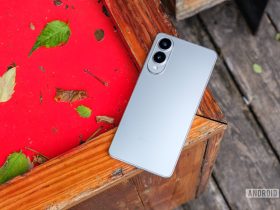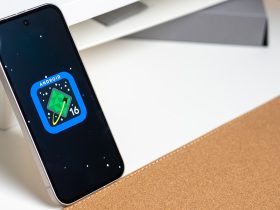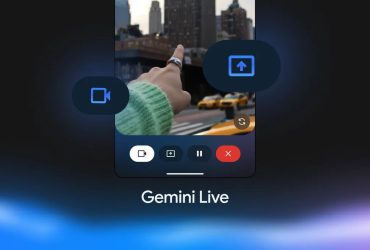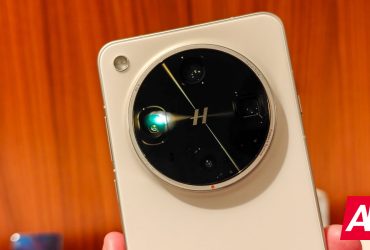Phone Comparisons: OnePlus 13 Vs Google Pixel 9 Pro Specs
Contents
We’ve compared the large-format OnePlus and Samsung flagships a while back, the OnePlus 13 and Google Pixel 9 Pro XL. Well, in this article, we’ll pit the best from OnePlus vs the smaller Google flagship. In other words, we’ll compare the OnePlus 13 vs Google Pixel 9 Pro specs. Both of these smartphones are quite powerful, but they’re also very different at the same time. There’s a lot to talk about here.
As per usual, we’ll first compare their specs and will then move to compare them across a number of other categories. We’ll be comparing their designs, displays, performance, battery life, cameras, and audio output. These two phones do not only differ design-wise, but they have notably different internals too. Let’s get to it, shall we?

OnePlus 13
![]()
Google Pixel 9 Pro
| OnePlus 13 | Google Pixel 9 Pro | |
|---|---|---|
| Dimensions | 162.9 x 76.5 x 8.5 mm or 8.9 mm | 152.8 x 72 x 8.5 mm |
| Weight | 210/213 grams | 199 grams |
| Display | 6.82-inch LTPO 4.1 AMOLED | 6.3-inch LTPO OLED |
| Refresh rate | 1-120Hz (adaptive) | 1-120Hz (adaptive) |
| Resolution | 3168 x 1440 | 2856 x 1280 |
| Chipset | Qualcomm Snapdragon 8 Elite | Google Tensor G4 |
| RAM | 12GB/16GB/24GB (LPDDR5X) | 16GB (LPDDR5X) |
| Storage | 256GB/512GB/1TB (UFS 4.0) | 128GB/256GB/512GB/1TB (UFS 3.1) |
| Main camera | 50MP (f/1.7 aperture, 1/1.43-inch sensor size, 1.12um pixels ize, multi-directional PDAF, OIS) | 50MP (f/1.7 aperture, 1/1.31-inch sensor size, 1.2um pixel size, dual pixel PDAF, OIS) |
| Ultra-wide camera | 50MP (f/2.0 aperture, 1/2.75-inch sensor size, 120-degree FoV, PDAF) | 48MP (f/1.7 aperture, 1/2.55-inch sensor size, 123-degree FoV, dual pixel PDAF) |
| Telephoto camera | N/A | N/A |
| Periscope telephoto camera | 50MP (f/2.6 aperture, 1/1.95-inch sensor size, 0.8um pixel size, 3x optical zoom, OIS) | 48MP (f/2.8 aperture, 1/2.55-inch sensor size, dual pixel PDAF, OIS, 5x optical zoom) |
| Selfie camera | 32MP (f/2.4 aperture, 1/2.74-inch sensor size, 0.8um pixel size) | 42MP (f/2.2 aperture, PDAF) |
| Battery size | 6,000mAh | 4,700mAh |
| Charging | 100W wired, 50W wireless, 10W reverse wireless, 5W reverse wired (charger not included) | 27W wired, 21W wireless (Pixel Stand), 12W wireless (Qi), 5W reverse wired (charger not included) |
| Colors | Black Eclipse, Arctic Dawn, Midnight Ocean | Porcelain, Rose Quartz, Hazel, Obsidian |
OnePlus 13 vs Google Pixel 9 Pro: Design
These two phones do look somewhat similar from the front, but when we flip them around, it’s a completely different deal. Both phones do have flat displays with a centered display camera hole up top. That camera hole is larger on the Pixel 9 Pro, though. The bezels around both displays are thin and uniform, but they’re thinner on the OnePlus 13. The corner curvature on the two phones is similar, but slightly more pronounced on the Pixel 9 Pro.
Both devices have a flat frame all around. They both also include their physical buttons on the right-hand side. The layout of those buttons is different, though. The OnePlus 13 includes a power/lock key below the volume up and down buttons. It’s the other way around on the Pixel 9 Pro. The OnePlus 13 also includes an alert slider on the left side. You’ll also find an IR blaster at the top of that phone, which is not the case with the Pixel 9 Pro.
If we flip them around, you’ll see notable differences. The OnePlus 13 features a camera island in the top-left corner. It’s round and includes three cameras. The Google Pixel 9 Pro has a camera bar on the back, a horizontal one. There are three cameras inside it. Both camera modules do protrude on the back, though. The backplate on both phones is mostly flat, though more so on the Pixel 9 Pro than the OnePlus 13. The one on the OnePlus 13 curves towards the sides.
Both phones are made out of metal and aluminum, well, aside from the blue OnePlus 13 model. That one has eco leather on the back, which makes it notably more grippy than all the other models from both companies. The Pixel 9 Pro is considerably shorter and narrower, which makes it easier to use, especially with one hand. The OnePlus 13 does weigh around 10 grams more in comparison. The OnePlus 13 has better water and dust resistance with IP68 and IP69 certifications, vs the IP68 certification on the Pixel 9 Pro.
OnePlus 13 vs Google Pixel 9 Pro: Display
A 6.82-inch 3168 x 1440 LTPO 4.1 AMOLED display sits on the OnePlus 13. That display is flat, and it offers an adaptive refresh rate (1-120Hz). It can project up to 1 billion colors, and supports Dolby Vision and HDR10+ content. HDR Vivid is also supported here. The peak brightness this display offers is 4,500 nits, in theory. The screen-to-body ratio is at around 90%, while the display is protected by the Ceramic Guard glass.

The Google Pixel 9 Pro, on the flip side, has a 6.3-inch LTPO OLED panel. That panel is also flat, and it offers a resolution of 2856 x 1280 pixels. It supports an adaptive refresh rate (1-120Hz), while it also supports HDR10+ content. The peak brightness here is 3,000 nits, in theory. The screen-to-body ratio is at around 87%, while the display aspect ratio is 20:9. The Gorilla Glass Victus 2 is here to protect this panel.
Both of these displays are excellent, actually. They’re both vivid, have good touch response, and very good viewing angles. The blacks are as deep as you’d expect them to be on both panels, and both displays are also plenty sharp. They also get more than bright enough in basically every situation. There’s not much to complain about here, but I’ll note that the Pixel 9 Pro does not have high-frequency PWM dimming, unlike the OnePlus 13. If you’re sensitive to that, you’ll appreciate the information.
OnePlus 13 vs Google Pixel 9 Pro: Performance
OnePlus’ flagship is fueled by Qualcomm’s most powerful processor, the Snapdragon 8 Elite. That is a 3nm chip, and it’s combined with up to 24GB of LPDDR5 RAM (up to 16GB outside of China). OnePlus also uses UFS 4.0 flash storage here. The Pixel 9 Pro, on the flip side, is fueled by the Google Tensor G4 processor, a 4nm chip. It comes with 16GB of LPDDR5X RAM and UFS 3.1 flash storage. Neither phone supports storage expansion, by the way.
Both of these phones are very snappy in terms of day-to-day use. They can open apps fast, multitask without a problem, and so on. The thing is, in direct comparison, the OnePlus 13 is a bit snappier. That is to be expected thanks to its chip and faster storage, of course. The Pixel 9 Pro is not far behind, and you really won’t have any complaints if you don’t compare it to something a bit snappier directly. The phone is plenty fast.
What about games? Well, that’s where the OnePlus 13 is the better option, not just because of its size. It has a chip that is more catered to gaming than the Pixel 9 Pro, not ot mention some gaming features as well. That chip handles high-end titles better than the Tensor G4, as that processor is inferior in terms of CPU and GPU performance, and it’s not really made for gaming. You can play games with the Pixel 9 Pro, of course, but they’ll run better on the OnePlus 13.
OnePlus 13 vs Google Pixel 9 Pro: Battery
The OnePlus 13 includes a 6,000mAh silicon-carbon battery. The Google Pixel 9 Pro, on the other hand, ships with a 4,700mAh unit. The Pixel 9 Pro is a smaller phone, true, but this is still a jarring difference. Google would have been better off with a silicon-carbon battery, as it would allow the company to keep the same battery size but increase capacity. Oh well, maybe in the coming years.
The OnePlus 13 does offer better battery life, it’s not even close. However, the Pixel 9 Pro is not bad in that regard, not at all. In fact, for a compact flagship, it offers rather good battery life. Both of these phones can reach rather high screen-on times. We’ve been able to reach the 10-hour mark on the OnePlus 13, while the Pixel 9 Pro can go over 8 hours of screen-on-time, in theory. Your mileage may vary considerably, as there are a lot of variables here.
When it comes to charging, the OnePlus 13 destroys the Pixel 9 Pro. It supports 100W wired, 50W wireless, 10W reverse wireless, and 5W reverse wired charging. The Pixel 9 Pro, on the flip side, supports 27W wired, 21W wireless (with Pixel Stand), 12W wireless (Qi), and 5W reverse wireless charging. The OnePlus 13 charges fully in around 35 minutes, while the Pixel 9 Pro takes almost an hour and a half to reach 100%.
OnePlus 13 vs Google Pixel 9 Pro: Cameras
Both of these phones come with three rear cameras, but the units are different. The OnePlus 13 includes a 50-megapixel main camera (1/1.43-inch sensor size), along with a 50-megapixel ultrawide unit (1/2.75-inch sensor size, 120-degree FoV), and a 50-megapixel periscope telephoto camera (1/1.95-inch sensor size, 3x optical zoom).

The Google Pixel 9 Pro, on the other hand, is equipped with a 50-megapixel main camera (1/1.31-inch sensor size), a 48-megapixel ultrawide unit (1/2.55-inch sensor size, 123-degree FoV), and a 48-megapixel periscope telephoto camera (1/2.55-inch sensor size, 5x optical zoom). So both of them have wide, ultrawide, and periscope telephoto cameras, albeit different.
The results are very good on both smartphones, though rather different. The Pixel 9 Pro simply loves to provide very contrasty shots, and they look a bit more artificial than the ones on the OnePlus 13. The OnePlus 13 is not afraid of keeping images a bit darker in low light, to make them look a bit more realistic, unlike the Pixel 9 Pro. Both phones handle HDR shots with ease, and both provide detailed images.
Their ultrawide cameras are on the same playing field, though, unlike the main camera, we did prefer images from the Pixel 9 Pro’s ultrawide camera most of the time. The OnePlus 13 has a better periscope telephoto unit, and that is reflected in the images, for the most part. Both of these phones are good camera phones, you can’t go wrong.
Audio
What about audio? Well, stereo speakers are a part of both smartphones. The ones on the OnePlus 13 are a bit louder, but the difference is not all that big. The audio output from both phones is very good, though.
There is no audio jack on either of these two smartphones. You can use Type-C ports on both phones to connect your wired headphones, though. Alternatively, both of them support Bluetooth for wireless connectivity. It’s Bluetooth 5.4 in the case of the OnePlus 13, and Bluetooth 5.3 is provided by the Pixel 9 Pro.
What’s your reaction?
Love0
Sad0
Happy0
Sleepy0
Angry0
Dead0
Wink0










Leave a Reply
View Comments